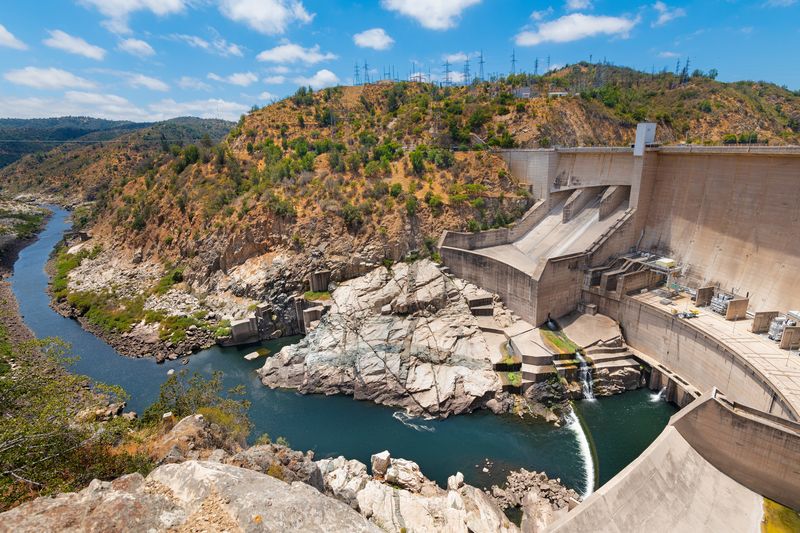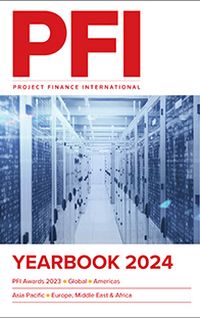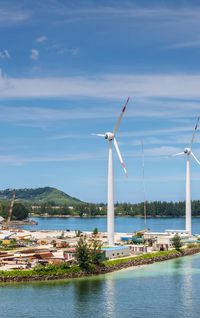Bank of the Year – Mizuho
Japanese bank Mizuho enjoyed a stellar 2023 in the Americas, with its ability to lead and advise on the biggest deals in the region, the breadth of its offerings, and capability to transact across asset classes and geographies meaning it took this year’s award for Bank of the Year.
Japanese banks have dominated project finance for well over a decade now, but Mizuho has often had to play third fiddle to its compatriots MUFG and SMBC. In 2021, the bank set about redefining its project finance strategy to align with its broader investment banking build-out by using project finance to help drive its M&A, loan capital markets, and hedging business while acting in leadership roles in large transactions. These capabilities it added to its financial advisory, structuring and arranging, and syndication and agent services.
The strategy has started to bear fruit. Since 2021, Mizuho has climbed six places in the PFI League Tables, establishing itself as a top-tier project finance institution in the Americas, and will this year be among the top few lenders in the region with a roughly 5% market share. If you look across the biggest and most successful deals done in the region, Mizuho’s fingerprints are all over them.
The bank acted as financial adviser, joint mandated lead arranger, and sole swap coordinator in the US$1.77bn financing for Marubeni and Transelec to develop a desalination plant that will deliver water to Codelco’s copper mines in northern Chile. It was a coordinating lead arranger, joint bookrunner, syndication agent, documentation agent, global coordinator, and P1 collateral agent on the biggest deal done in the region for the Rio Grande LNG Phase 1. And was bookrunning mandated lead arranger, NEXI coordinator, and NEXI covered facility agent on the US$1.63bn financing of the FPSO Almirante Tamandare in Brazil, to name just a few of its deals across the region.
Mizuho has made noticeable strides in the ESG space and has been supportive of numerous clients in the renewables sector. In 2023 alone, the bank led several greenfield renewable energy and battery storage transactions that will build out more than 1,100MW of generation and 340MW/1,360MWhs of storage.
Aside from greenfield transactions, the bank continues to provide optionality for clients in the M&A space. By the end of 2023, Mizuho will have led multiple transactions that have included more than 8GW of operating renewable energy projects. By way of example, Mizuho acted as joint lead arranger and admin agent for Brookfield’s acquisition of Deriva Energy (formerly known as Duke Energy Renewables), a roughly 9GW portfolio of more than 90 operating renewable energy projects and a development pipeline
Key players in the bank’s Americas project finance set-up include Rahul Shah, head of project finance for Mizuho Americas, Jonathan Kim and Junji Hasegawa.
Deal of the Year – Rio Grande LNG
In July 2023, NextDecade reached a final investment decision (FID) on the first three trains of the 27m tonnes per year Rio Grande LNG export facility in Brownsville, Texas. The company raised US$18.4bn in total financing for Phase 1, one of the largest globally. The debt financing comprised two seven-year construction term loan facilities totaling US$11.1bn, of which US$800m is guaranteed by TotalEnergies; a US$500m revolving credit facility; and US$700m of non-recourse, senior secured private placement notes. The bank financing was priced at SOFR plus a margin of 225bp or the base rate plus a margin of 125bp. The notes were priced at 6.67% and mature in 2033.
MUFG acted as financial adviser to NextDecade in connection with the debt financing and Macquarie Capital as financial adviser to NextDecade on the equity financing. Lead banks on the bank debt included MUFG, Mizuho, Abu Dhabi Commercial Bank, Bank of China, HSBC, Intesa, JP Morgan, RBC, Santander, and Standard Chartered. The private placement was led by MUFG and RBC. The commercial and financing structure enabled Rio Grande to become the first major LNG project financing to achieve investment-grade credit ratings without employing sponsor completion guarantees. The private placement was the first-ever pre-FID project-level bond issuance in LNG financing history.
Concurrent with financial close, NextDecade executed a joint venture agreement for Phase 1 with Global Infrastructure Partners, GIC and Mubadala Investment, as well as TotalEnergies, providing for a total of approximately US$6.1bn in equity commitments. Phase 1 comprises three LNG liquefaction trains capable of producing a total of 18m tonnes per year of LNG, and has 16.2m tonnes per year contracted under long-term LNG sale and purchase agreements with TotalEnergies, Shell, ENN, Engie, ExxonMobil Asia-Pacific, Guangdong Energy, China Gas Hongda Energy Trading, Galp Trading and Itochu.
Once completed, the Rio Grande LNG project will be the largest privately funded infrastructure project in Texas. NextDecade has also committed to reducing 90% of the project’s CO2 emissions through planned carbon capture and storage projects. The first commercial deliveries from Train 1, 2 and 3 are expected for Q3 2027, Q2 2028, and Q3 2028, respectively. Commercial operations are expected in October 2028.
The transaction was unique for its highly diverse sponsor group comprising several international infrastructure investment funds and a global oil and gas major alongside NextDecade. The lender group for the construction financing includes banks spanning multiple continents including North America, Asia and Europe, and the final syndicate was expected to comprise more than 30 lenders. Norton Rose served as borrowers’ counsel and Latham & Watkins was counsel to NextDecade. Kirkland & Ellis advised GIP, Jones Day advised TotalEnergies, Sidley Austin advised GIC, and White & Case advised Mubadala.
Digital Deal of the Year – Gigapower
The growth of digital infrastructure globally is commanding more and more money and project finance deals in the space are growing in number and size. AT&T and Blackrock joint venture Gigapower closed the premier financing in the space this year with a US$1.65bn deal for a greenfield multi-gig fibre-to-the-home for 1.5m customer locations outside of AT&T’s existing 21-state footprint. In December 2022, AT&T and Blackrock signed a definitive agreement to create the 50/50 JV Gigapower. The platform will operate as a wholesale open-access fibre network operator and offer wholesale access to retail ISPs and other businesses.
The new infrastructure will be the first of its kind built in target markets including Las Vegas, Mesa, Chandler, and the Gilbert areas of Arizona, northeastern Pennsylvania including Wilkes-Barre and Scranton, as well as parts of Alabama and Florida. With overall project costs of US$3.3bn, the sponsors was able to secure 50% leverage via a US$1.64bn seven-year term loan and a US$15m revolving credit facility. The deal was priced at SOFR plus 325bp. It was notable for its size and terms as well as its role in showing what is possible in the financing of this type of project in the United States. It is indeed a landmark transaction in the nascent digital infrastructure sector in the US.
Arrangers on the deal included BNP Paribas, Credit Agricole, Intesa Sanpaolo, ING, JP Morgan Chase, MUFG, National Westminster Bank, Natixis, and Standard Chartered. BBVA, Bayerische Landesbank Girozentrale, Citi, CoBank, KfW IPEX-Bank, Landesbank Baden-Wurttemberg, Morgan Stanley, Norddeutsche Landesbank Girozentrale, Scotiabank, and Texas Capital Bank were participants in the syndication. Societe Generale was administrative agent. Gibson Dunn advised the sponsors, Latham & Watkins the lenders. The group was able to close a first-of-a-kind structure for a US greenfield fibre project finance transaction, which was able to be broadly syndicated to a receptive market. These types of deal had happened in Europe before but banks were able to adapt and expand the possibilities for this type of deal in the US market.
The innovative financing structure incorporates a number of conservative structural features that allow for extended availability to support the rollout while protecting lenders against penetration risk and construction delays. As Gigapower’s first tenant, AT&T will be able to greatly expand the number of customers and communities with access to the award-winning fibre internet service, AT&T Fiber, providing important wholesale services to new communities in an increasingly online world. AT&T, headquartered in Dallas, Texas, provides telecommunications, media, and technology services. BlackRock is a global investment manager based in New York operating across a range of sectors with more than US$9trn in assets.
Infrastructure Deal of the Year – Aguas Horizonte
One of the more carbon-intensive parts of the decarbonisation push is the mining of precious metals needed for electrification. Chile’s state-owned miner Codelco, the world's largest copper producer, is one of many mining companies looking to operate more sustainably. Part of that is shoring up sustainable water supplies for its mining operations, so it turned to Japan’s Marubeni and Chile’s Transelec to construct a desalination plant in Tocopilla City that will sell its output to three copper mines owned by Codelco. The financing of the plant this year stood out as the premier infrastructure financing in the Americas.
Marubeni (60%) and Transelec (40%) through their Aguas Horizonte subsidiary closed a US$1.77bn 22-year project finance loan and a US$25.3m standby letter of credit backing the project, which brought together a number of players to provide attractive terms on such a large and relatively novel financing.
The thirteen lenders on the deal included BBVA, Banco Santander, Intesa Sanpaolo, KfW IPEX-Bank, Korea Development Bank (KDB), Mizuho, MUFG, Norinchukin Bank, SBI Shinsei Bank, Societe Generale, SMBC, Sumitomo Mitsui Trust Bank, Credit Agricole, and Scotiabank. Norton Rose Fulbright represented the sponsors, while Shearman & Sterling acted for borrowers. Mizuho advised the sponsors.
Works include construction of a high-pressure water supply pipeline, a pumping station to transport water from the coast to a copper mine area located approximately 160km inland at an altitude of about 3,000m, a large water reservoir, a water distribution pipeline for each mine, and an overhead power transmission line and substation. It is set to supply water to the three following major mines in the northern part of the country: Radomiro Tomic, Chuquicamata, and Ministro Hales, which together account for about half of Codelco’s copper production. The project’s water production capacity is approximately 70,000 cubic metres per day, with this capacity planned to be expanded to approximately 170,000 cubic metres per day in the future.
Techint Chile is serving as EPC contractor. The plant will be operated for 20 years after completion before transferring to Codelco. Marubeni concluded a long-term water sales agreement related to this project in July 2022. The loan agreement was signed on March 8 2023. Construction on the project then started on March 27 2023.
Codelco runs about 10% of the world’s copper production and owns the world’s largest existing copper mine production facilities. The company currently relies on inland supplies for all of the water used in mine development and copper refining processes, but it has committed to reducing inland water consumption by 60% by 2030.
Transelec is the leading provider of high voltage systems in Chile, with more than 10,000km of transmission lines and 69 substations, contributing to transmit power that lights nearly 90% of the homes on the national grid. Japan’s Marubeni has a track record of multiple power generation and desalination projects (IWPPs) as well as water production projects (IWPs) mainly in the Middle East. In Chile, Marubeni has been developing the water supply and sewerage business in six of the country’s 16 provinces, covering approximately 10% of the total population of these provinces.
Power Deal of the Year – IRGAH
IRG Acquisition Holdings (IRGAH), a partnership between Invenergy, CDPQ and funds managed by Blackstone Infrastructure Partners, closed the first large-scale tax credit transfer deal in the US, launching a market that has been eagerly awaited since the passage of the Inflation Reduction Act (IRA) in August 2022. The transaction created a financeable transferability product expected to be used to scale the growth of renewable energy, the energy transition and its associated supply chain development.
IRGAH closed on the acquisition of American Electric Power's 1.3GW contracted renewables portfolio for US$1.5bn and secured a US$580m commitment for a production tax credit (PTC) transfer with Bank of America Securities, which served as transferability underwriter, placement agent, and financial adviser. The tax credit transfer served as the foundation for the financial structuring. Just over US$1bn in financing for the acquisition was led by Santander, Rabobank, Natixis, and Export Development Canada. Additional lenders included BBVA, Banco de Sabadell, Bayerische Landesbank, CaixaBank, MetLife, National Westminster Bank, NordLB, SG, and ICBC.
The portfolio represents the largest acquisition in Invenergy’s history and includes 14 projects in 11 states, with 1.2GW of wind and 165MW of solar. The power is sold under long-term power purchase agreements (PPAs) with utilities, corporations, and municipalities. All assets are operating and the portfolio is 97% contracted over the next five years with a weighted-average offtaker rating of BBB+.
“This represents the first announced large-scale transferability transaction to close since the passing of the Inflation Reduction Act [IRA] in August 2022 and creates a financeable transferability product that will be used to scale the growth of renewable energy, energy transition, and its associated supply chain development," said Karen Fang, global head of sustainable finance at Bank of America.
The cashflows generated by selling the production tax credits (PTCs) were able to be leveraged in conjunction with the cashflows generated by the power sales. Invenergy and BofA signed a US$580m PTC transfer agreement. The first-of-its-kind transaction was the first financing to monetise alternate structures to traditional tax equity structures, simplified the capital structure and set the standard for several renewables project finance transactions monetising transferability that followed later in the year. Milbank represented the lenders. Sheppard Mullin and Norton Rose Fulbright represented the sponsors. Kirkland & Ellis represented Blackstone Infrastructure Partners on its entry into IRGAH.
Storage Deal of the Year – Aypa Power
Blackstone-backed battery storage developer Aypa Power’s US$339m loan for standalone battery projects in California and Texas was a standout based on a financing structure that leveraged both contract and merchant cashflows. The financing backs development and construction of the merchant 150MW Borden battery storage project in Borden County, Texas and the contracted 100MW Cald battery storage project in Los Angeles, California. Borden will generate revenues through energy arbitrage, purchasing and storing power in periods of low prices and selling back to the grid during peak hours, and ancillary services. Cald has a long-term tolling agreement with San Diego Gas & Electric.
MUFG, Nomura, National Bank of Canada and First Citizens Bank served as lead arrangers. The financing is significant as one of the first of what are expected to be many standalone battery energy storage projects involving full tax equity participation and mechanics relevant to tax credit transferability, according to Daniel Michalchuk, practice group leader of global project, energy and infrastructure finance at Milbank, who advised the lenders. The sponsor was advised by Sheppard Mullin.
The financing structure incorporated conservative sizing metrics with nearly 60% of the term loan repaid by maturity in year five and with full repayment achieved in year eight assuming a 100% cash sweep post maturity, well within the 12-year tolling agreement. Aypa also raised US$200m in tax equity to back development and construction of the projects, with US Bancorp serving as tax equity investor. Once complete, both assets will benefit from favourable market dynamics within California and Texas. In the near term, the power markets have to rely on flexible resources such as battery storage to maintain grid reliability and shift generation to hours of demand in the near term. Within ERCOT in particular, storage will provide significant value by increasing reliability and reducing volatility. The projects will be built by Cupertino Electric and Linxon, respectively, while the BESS will be supplied by Canadian Solar.
Renewables Deal of the Year – SB Orion
SB Energy Global, a US-focused unit of Japan’s SoftBank and funds managed by Ares Management, secured more than US$2.4bn to support energy communities with renewable energy in Milam County, Texas. Banks including MUFG, Mizuho Americas, ING, SMBC, CIBC, Fifth Third Bank, and Societe Generale provided US$1.2bn in construction debt and US$450m in term debt. JP Morgan, Bank of America, Morgan Stanley Renewables and Truist Bank provided approximately US$800m in tax equity. The financing backs a 1.3GW portfolio of four utility-scale solar projects in energy communities that have seen higher-than-average unemployment due to coal closures or fossil fuel retirements. The projects – Orion I, Eiffel, Orion II, and Orion III – are eligible for additional tax credits under the Inflation Reduction Act.
The Orion portfolio was financed via three separate transactions, all closed within a few months of each other with the same sponsor, offtaker, and location near Austin, Texas. Mizuho led Orion I and Orion III while MUFG led Orion II. JP Morgan served as tax equity provider on Orion I, Morgan Stanley Renewables served as tax equity provider on Orion II, and Truist Securities served as tax equity provider on Orion III. Projects in the portfolio are also among the first utility-scale projects in the US to reach financial close with the domestic content adder, a provision in the IRA designed to strengthen America's manufacturing base. To qualify, SB Energy is using 1.1m high domestic content solar modules manufactured in Ohio by First Solar. Nextracker is supplying trackers with recently expanded component providers in multiple states, including Pennsylvania, Nevada, and Tennessee. All structural steel on the projects will be sourced from Texas and Georgia.
Google is purchasing approximately 75% of the energy from the four projects under a 15-year power purchase agreement to power its data centres in Texas.
SB has 2GW of solar in operation and 1GW in construction, and another 15GW of solar and 12GW of storage under development. The company said it is continuing to explore the IRA’s expansion of tax credits and new approaches to tax equity, including transferability. Latham & Watkins served as lenders’ counsel. Kirkland & Ellis and Milbank served as borrowers’ counsel.
Acquisition Deal of the Year – EnfraGen
There are pockets of the globe that rarely see mega project finance deals, so it is all the more impressive when they come along. IPP EnfraGen’s project finance loan backing its acquisition of a Central American renewables portfolio and the refinancing of a previous facility tapped both bank and bond markets to highlight this asset class’s ability to deliver for customers and made it Latin American Deal of the Year.
EnfraGen had a few problems to solve when it set out to close this US$1.7bn deal. The company was closing its acquisition of a 188MW six-asset renewable energy portfolio in Panama and Costa Rica from Celsia in a deal worth US$194m, while it was also looking to refinance the company’s main bank debt facility originally executed in December 2020. The company closed a US$1.05bn five-year bank loan refi with a group of eight banks. Lenders on the loan include global coordinators JP Morgan and Scotiabank, with BNP Paribas, Intesa Sanpaolo, Mizuho, MUFG, Societe Generale, and SMBC.
The refinancing of the bank debt reset EnfraGen’s financing facility for a fresh five-year maturity, reset the amortisation profile to accommodate the new cashflow profile of the new assets, and implemented a group of operational amendments to the credit agreement to optimise the facility after two years of managing the credit.
Concurrent with the original bank loan closing, EnfraGen landed a US$710m 10-year bond issue. JP Morgan and Scotiabank were again global coordinators on the bond deal, as well as joint bookrunners along with BNP Paribas, IMI Intesa Sanpaolo, Mizuho, MUFG, SMBC Nikko, and Societe Generale. Initial price thoughts on the notes were 5.75%, before the deal was launched with guidance of 5.625%. The bonds were finally sold at 99.039 with a 5.375% coupon to yield 5.5% – an impressive shaving of 0.425% from original thoughts following a positive reception by the market.
“The refinancing of EnfraGen’s bank debt facility under similar terms to what we transacted in December 2020 represents a great result for the company and demonstrates continued strong support from the bank market for EnfraGen’s energy transition business and growth strategy,” said Bryan Murphy, president of EnfraGen, at the time. “We also believe our bondholders will find these acquisitions and refinancing a positive result for the company.”
The renewable power facilities in the purchase were the 199MW Dos Mares Hydro Complex in Panama that includes three run-of-river hydro plants, the combined 19.7MW Prudencia and Divisa solar projects in Panama, and the 49.5MW Guancaste wind farm in Costa Rica. Paul Hastings, Sigma Law Firm in Panama, and Arias in Costa Rica acted as legal advisers for EnfraGen. Partners Group and Glenfarne Energy Transition back EnfraGen, while Colombian electricity company Celsia owns Argos.
To see the digital version of this report, please click here.
To purchase printed copies or a PDF of this report, please email leonie.welss@lseg.com













